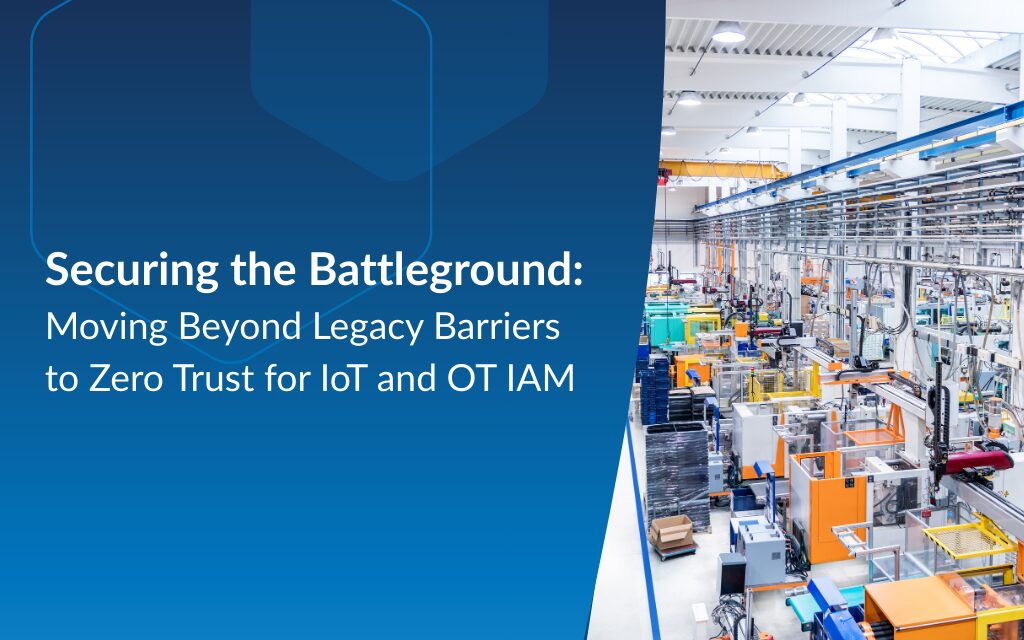Securing the Battleground: Moving Beyond Legacy Barriers to Zero Trust for IoT and OT IAM
Securing the Battleground: Moving Beyond Legacy Barriers to Zero Trust for IoT and OT IAM
Introduction
Identity and Access Management (IAM) is rapidly emerging as the next battleground in industrial cybersecurity. As connectivity increases in operational technology (OT) and IoT environments, the complexity of securing machine and human identities grows. Legacy systems, cultural resistance, and the tension between uptime and security controls make IAM adoption a major challenge for operators.
At Device Authority, we believe IAM must evolve from a secondary consideration to the foundation of cyber resilience. With NIST frameworks, CISA guidance, and the EU Cyber Resilience Act driving change, identity-centric security is no longer optional. It is essential.
Legacy and Cultural Hurdles in OT Security
Industrial systems were built for longevity, not adaptability. Assets remain in place for decades, often prioritizing safety and availability over security and confidentiality. In many of these environments managing the device identity lifecycle has become a critical foundation hampered by legacy technology. This creates a cultural reluctance to change, leading to outdated models, shared credentials, and manual processes prone to human error.
The problem is clear: attackers no longer need to “hack in” when they can simply “log in.” Without modern IAM, both human and machine identities are vulnerable entry points.
Standards and Gaps in Industrial IAM
Frameworks such as IEC 62443 and NIST SP 800-series provide essential IAM guidance. Yet their real-world application often falls short in fragmented and legacy-heavy environments. Operators need more than principles. They require automation and scalable enforcement that works across greenfield and brownfield deployments.
Removing the Human Factor with Automation
Device Authority’s KeyScaler™ platform automates the full lifecycle of device identities. From onboarding and credential issuance through rotation, revocation, and decommissioning, KeyScaler removes reliance on manual processes. This reduces error, eliminates cost, and enforces Zero Trust principles across millions of devices.
Our platform aligns with NIST 800-207 Zero Trust principles and the EU Cyber Resilience Act, helping operators meet compliance without disrupting operations. For unmanaged and edge devices, KeyScaler extends security where traditional IT tools cannot reach.
From Compliance to Collaboration
Industrial IAM cannot be solved in isolation. Collaboration between operators, manufacturers, and regulators is critical. Operators cannot risk downtime, while manufacturers must design with Secure by Design principles. KeyScaler supports this by integrating seamlessly with existing ecosystems including Azure, AWS, and CyberArk, enabling end-to-end trust without costly rearchitecture.
Preparing for the Future of Non-Human Identity
As AI, automation, and machine-to-machine interactions accelerate, non-human identities will dominate IAM strategies. Identity-first models are the only way to ensure resilience in this new landscape.
As our CEO, Darron Antill, explains:
“The Cyber Resilience Act and NIST frameworks are not just compliance checkboxes. They are forcing functions to modernize identity management in OT and IoT. Removing the human factor and automating IAM is the only scalable way forward for operators who want resilience without sacrificing uptime.”
Final Thought
Industrial IAM is at a turning point. The barriers of legacy infrastructure and culture remain, but automation, Zero Trust, and lifecycle device identity management provide a path forward. By removing the human factor and aligning with frameworks such as NIST and CRA, organizations can achieve both resilience and compliance.
Ready to see how automation can transform IAM in your OT and IoT environments?
Explore KeyScaler™ and try our ROI calculator today.
